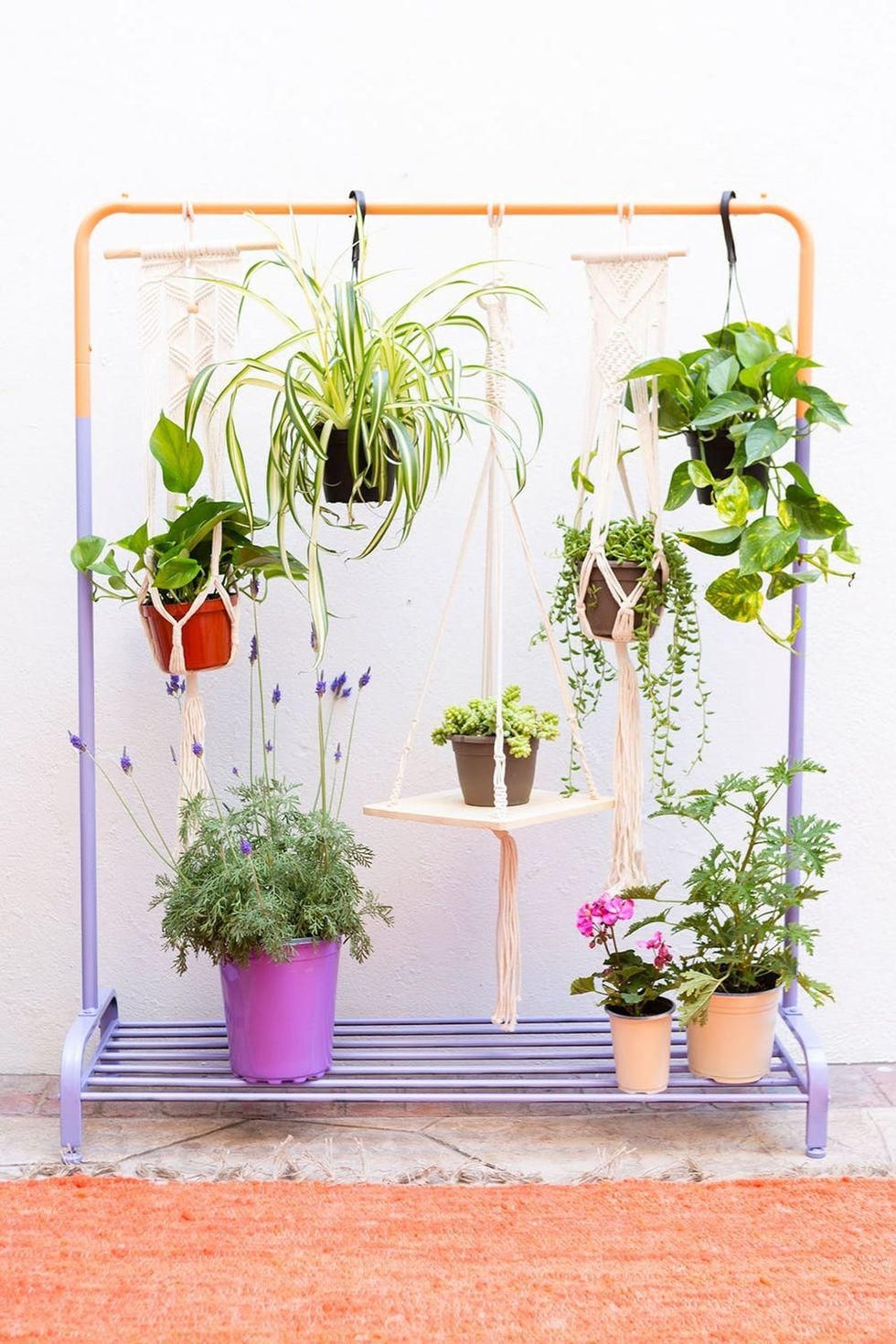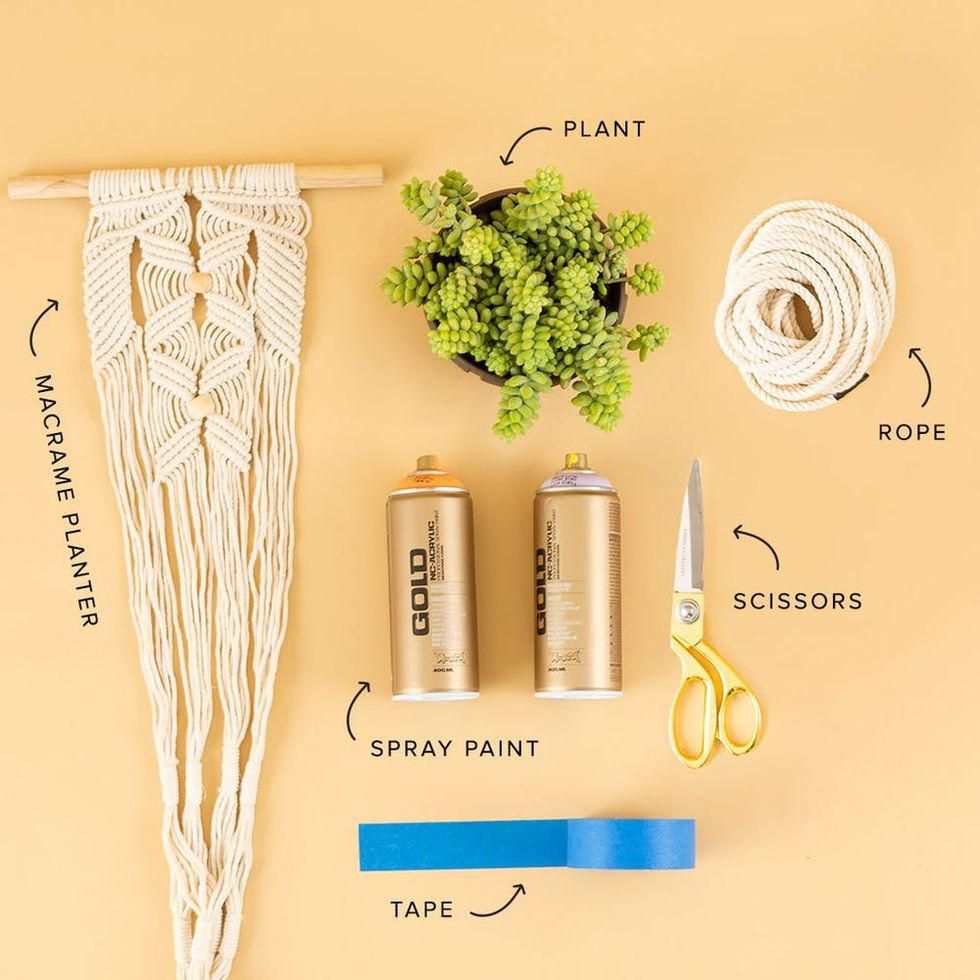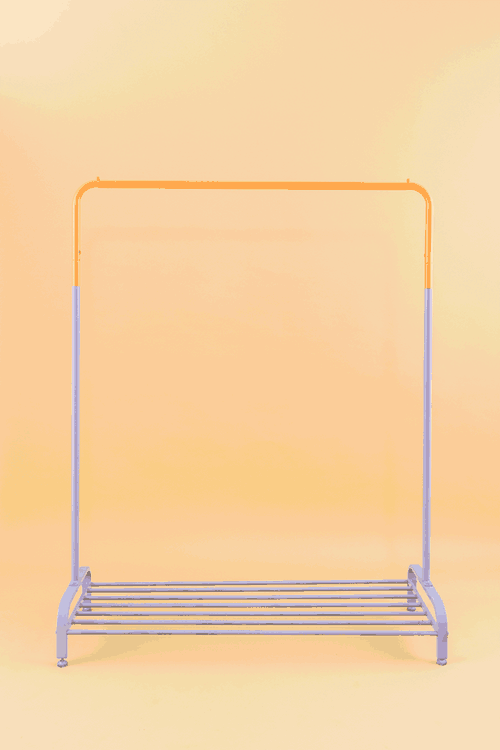Think you don’t have space for a garden? Think again.
How to Turn a Clothing Rack Into a Vertical Garden

By Cassidy Miller,
Cassidy Miller
Cassidy is a San Francisco-based creative taking each day one donut at a time.
Maddie Bachelder
Maddie is a Creative Strategist at Brit + Co. She fills her free time memorizing bad dad jokes, embroidering, listening to This American Life and posting a few too many Instagrams of San Francisco.
This DIY vertical garden is made with a clothing rack, macrame planters, and as much greenery as we could squeeze in and it works indoors or outdoors. It only takes five minutes to build. So whether you're patio-less, backyard-less, or are just looking for an excuse to double your plant collection, this easy DIY project is calling your name.






Materials + Tools:
- Clothing rack
- Assorted hanging macrame planters
- Rope for fastening
- Potted plants
- Spray paint + tape (optional)
Instructions:
- If you're adding color, first follow the step-by-step below.
- Using rope, fasten the macrame planters to the clothing rack.
- Carefully add in the potted plants.

If you want to gussy up your clothing rack with some color, try this color-blocking trick with spray paint:
- Measure and tape off about one foot of the top of each clothing rack arm.
- Spray paint one color above the tape, then let it dry.
- Remove the tape, then re-tape the arms just above your spray line.
- Spray the bottom half of the rack with your second color.
- Once dry, remove the tape.

Are you trying this DIY yourself? We want to see the results! Snap a pic and share it with us on Instagram @BritandCo.
Author: Maddie Bachelder
Production: Cassidy Miller
Photography: Brittany Griffin
This post has been updated.
The Latest
Make Your Inbox Your Happy Place
Get freebies, inspo, & more delivered to you.









